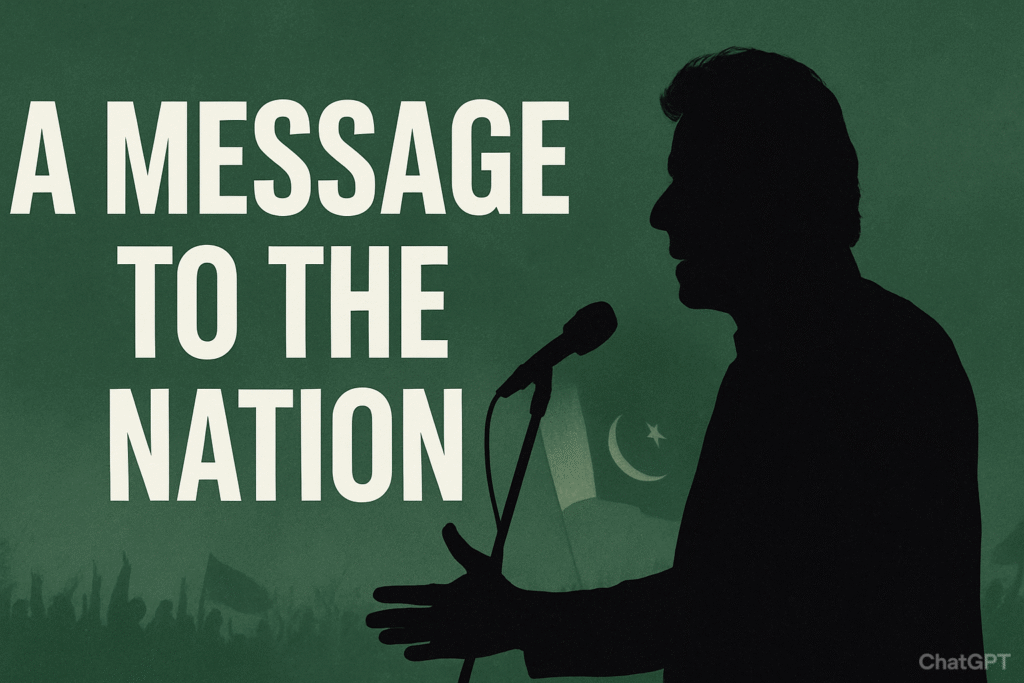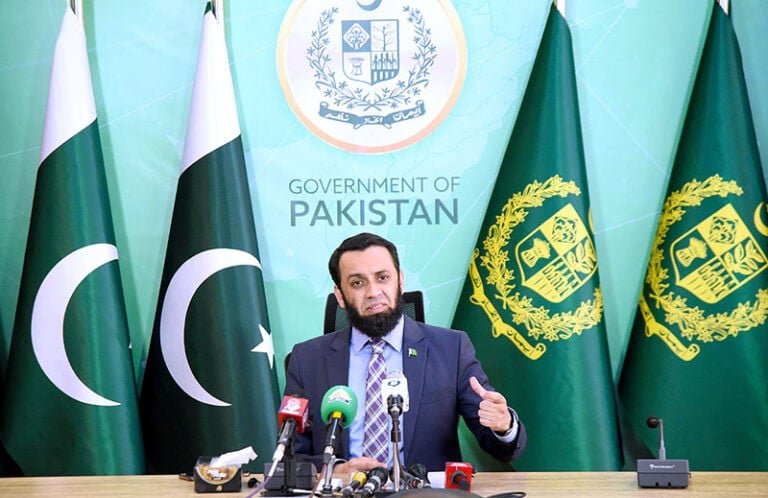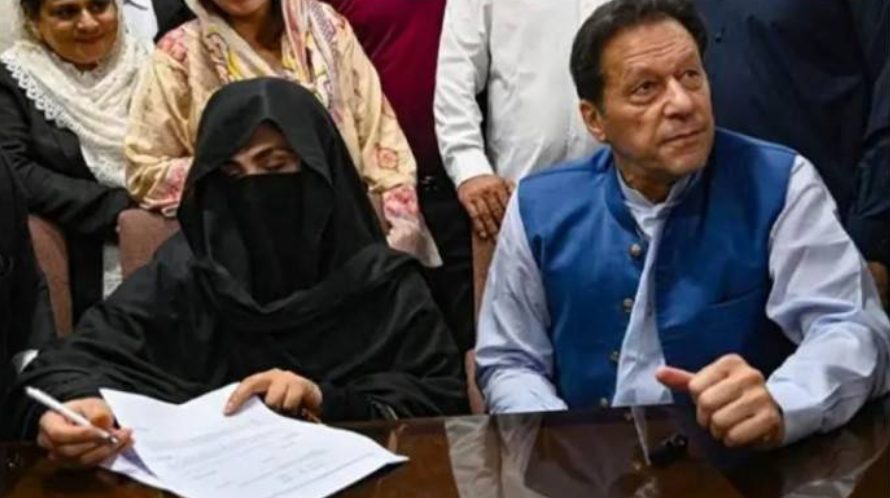A Message to the Nation
The first and most important aspect of the statement was a direct call to the people of Pakistan. Citizens were asked to prepare themselves for what lies ahead. This was not limited to a single city or province—it was a nationwide call.
Mobilisation Across Provinces
The Peshawar rally was highlighted as a symbol of resistance. Moreover, people from Khyber Pakhtunkhwa, Punjab, Sindh, Balochistan, Azad Kashmir, and Gilgit Baltistan joined hands to show solidarity. Consequently, this was seen as a historic moment in which provincial boundaries dissolved, and the entire nation came together under a single cause
However, such unity is not easy to achieve in the face of state repression. In fact, citizens defied fear and intimidation to stand by their political voice. Ultimately, this collective participation reflects that the people are not ready to surrender their democratic rights.
Significance of Public Participation in Peshawar Rally
The Peshawar rally was not just a political event—it was a message to those in power. Despite crackdowns, arrests, and media restrictions, people still chose to gather. This courage symbolises the resilience of the Pakistani people. It shows that no amount of force can silence a nation determined to claim its rights.
The message was clear: the people are not against the state but against injustice. They are ready to stand up for their future, the sanctity of the Constitution, and the restoration of democratic governance.
Questions Raised by FIA and the State’s Response
The Federal Investigation Agency (FIA) questioned the former Prime Minister about several critical issues. These questions revolved around allegations of anti-state activities, foreign policy remarks, and public criticism of military leadership. Each question, however, was met with detailed responses that reflected not only political positions but also concerns for national stability.
Allegations of “Anti-State” Tweets
The first question raised was about social media activity. Specifically, tweets made from the leader’s account were labelled as “anti-state.” In response, the response was straightforward: indeed, as a former Prime Minister and a representative of the majority of Pakistanis, it is his right to speak openly about national issues.
He emphasised that no authority can strip him of his right to raise concerns for the people. Speaking about corruption, injustice, or failed policies cannot be equated with being anti-state. In fact, remaining silent in such times would mean betraying the trust of the people.
Raising Concerns About Foreign Policy and Afghanistan
The second question was why he repeatedly talks about Afghanistan and foreign policy. The response reflected deep concern about regional stability. During the PTI government, a balanced approach led to peace, especially in tribal areas. Dialogue with Afghanistan, even with leaders hostile to Pakistan, brought stability.
However, under the new military leadership, policies shifted. Afghan refugees were forcibly expelled, drone strikes were carried out, and tensions rose once again. The former Prime Minister argued that ignoring these issues would mean ignoring the suffering of tribal communities and the risk of destabilising the entire region.
Questioning “Asim Law”
The third question was about the term “Asim Law.” The response was strong: everything destructive in Pakistan today is happening under this so-called law. From the abduction of political leaders to the May 9 crackdown, all actions reflect a systematic plan to crush opposition.
It was emphasised that these actions were not accidental; rather, they were organised and executed to weaken PTI and silence dissent. Furthermore, democracy, human rights, and freedom of speech have all been undermined under this structure of power.
References to Dhaka Fall and Historical Parallels
The fourth question was about comparing today’s situation with the fall of Dhaka in 1971. The leader argued that just as Yahya Khan refused to hand over power to Mujibur Rahman, today’s establishment is repeating the same mistakes. When legitimate voices are suppressed through force instead of dialogue, it only leads to national disaster.
The comparison is not propaganda—it is a reminder from history. Ignoring lessons of the past puts the nation at risk of repeating its darkest chapters.
Allegations of Mental Torture in Jail
The fifth and final question was about claims of mental torture. In response, the answer painted a grim picture: solitary confinement, denial of basic rights, and restricted communication with family and lawyers. Moreover, even simple facilities like newspapers and television were taken away for weeks.
The former Prime Minister explained that such treatment is designed to break a person mentally. Isolation, silence, and restrictions on interaction create unbearable psychological pressure. These actions, he argued, are not just against prison rules but also a violation of basic human rights.
The Right to Speak for the Nation
Every point raised in the interrogation reflects one underlying issue: the right to speak. The leader made it clear that he represents the will of the people, and his voice cannot be silenced.
Why the Former Prime Minister Claims Representation of 80% Pakistanis
The claim of representing 80% of Pakistanis is not without basis. Election results, public rallies, and visible support across provinces show a massive following. The argument is that silencing this voice means silencing the majority of the nation.
The Constitutional and Moral Right to Raise Voices
According to democratic principles, every citizen has the right to speak against injustice. For a former Prime Minister, this responsibility is even greater. The constitution provides freedom of speech, and no law can override this right. The moral duty to highlight corruption, failed policies, and misuse of power is stronger than any imposed restrictions.
By raising his voice, the leader argued, he is fulfilling his responsibility—not committing a crime.
Afghanistan, Foreign Policy, and Regional Stability
One of the central issues discussed was Afghanistan. The political and military establishment may view it differently, but the leader stressed that peace in Afghanistan directly impacts peace in Pakistan.
Peace Efforts During the PTI Government
During his government, the policy was to engage in dialogue rather than conflict. Despite hostile leadership in Afghanistan, negotiations were prioritised. This approach brought stability in tribal areas, where violence had long destroyed lives.
Dialogue with Ashraf Ghani and Its Outcomes
Efforts to engage Ashraf Ghani were seen as bold but necessary. By inviting him to Pakistan, bridges were built that temporarily stabilised the border regions. Such steps reduced hostility and opened the door for long-term peace.
Shift in Policy After Asim Munir’s Appointment
The shift came when the new military leadership abandoned dialogue and adopted threats. This worsened relations with Kabul and reignited tensions. Such policies, according to the leader, destroyed years of progress and destabilised Khyber Pakhtunkhwa once again.
Forced Repatriation of Afghan Refugees and Drone Strikes
The expulsion of Afghan refugees, many of whom had lived in Pakistan for three generations, was criticised as inhumane. Drone strikes worsened the crisis, fueling resentment among Afghans and damaging Pakistan’s global image.
The Lesson of History – Why Military Operations Fail
History proves that military operations do not bring lasting peace. Whether in East Pakistan in 1971 or the tribal areas in recent decades, force has only deepened divides. The call was clear: peace requires dialogue, respect, and cooperation among all stakeholders.
Understanding “Asim Law”
The term “Asim Law” has become symbolic of current repression. According to the leader, this is not an exaggeration but a reflection of ground realities.
The May 9 Incident and Its Aftermath
The abduction from the court premises and the subsequent crackdown on PTI supporters were not spontaneous. They were carefully planned. Thousands of workers were arrested within hours. CCTV footage was deliberately hidden, and the narrative was shaped to justify repression.
Targeting PTI Through Systematic Crackdowns
After May 9, the pattern became clear. Those who distanced themselves from PTI were set free. Those who stood firm faced harassment and detention. This selective application of justice revealed the real purpose: breaking the political strength of PTI.
Manipulation of Elections and Institutions
Despite public support, electoral mandates were stolen. Form 47 results were manipulated. Corrupt officials were rewarded, while honest ones were sidelined. Even the Election Commissioner, who should have faced charges, was given an extension.
Expansion of Judicial and Institutional Corruption
Judges loyal to the establishment were promoted, while others were pressured or sidelined. Every institution that was supposed to protect the constitution was instead used to suppress it.
The leader summed it up: “This is Asim Law—an unaccountable power structure designed to silence the voice of the people.”



